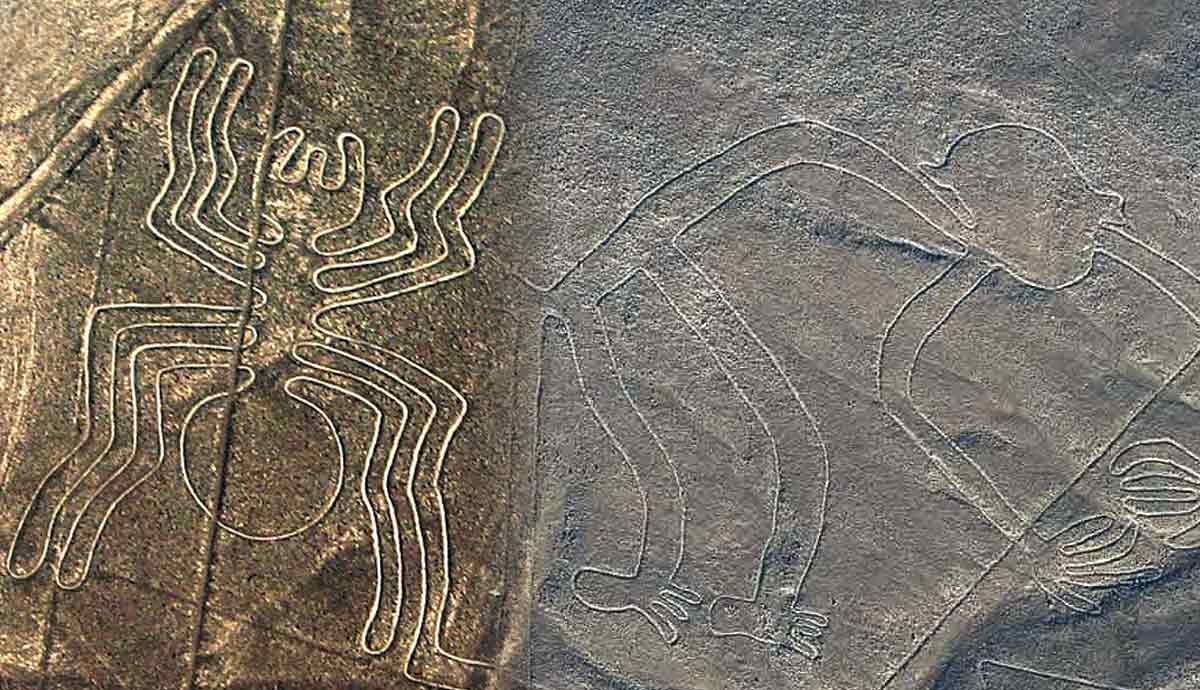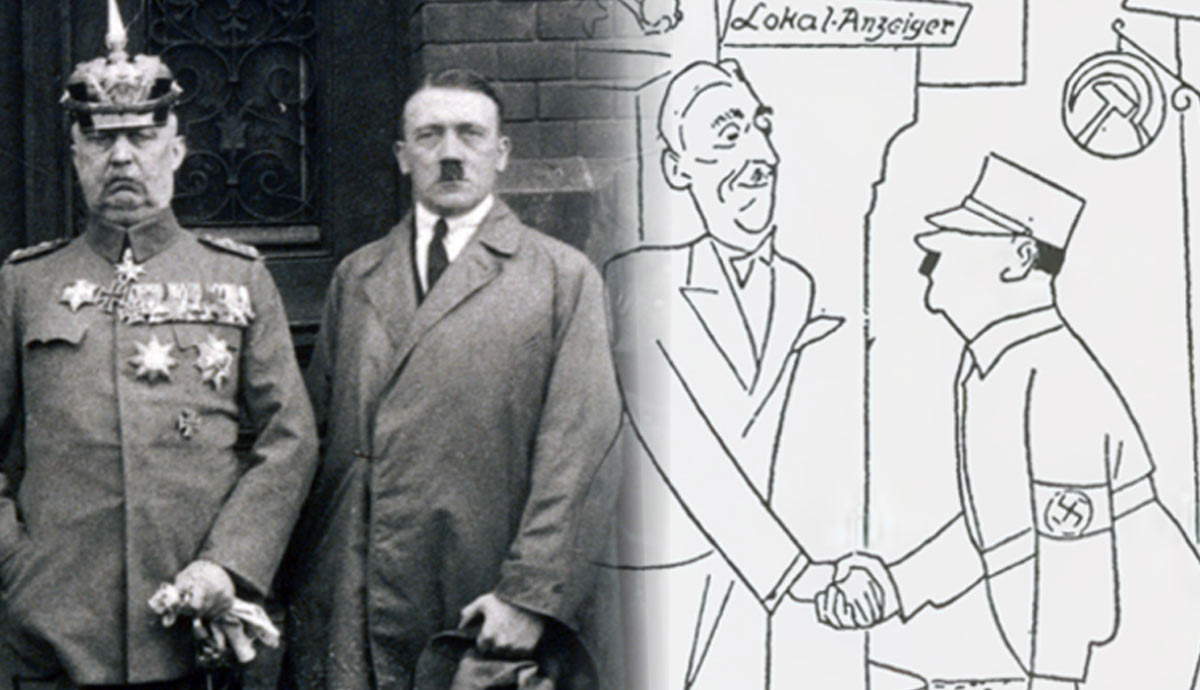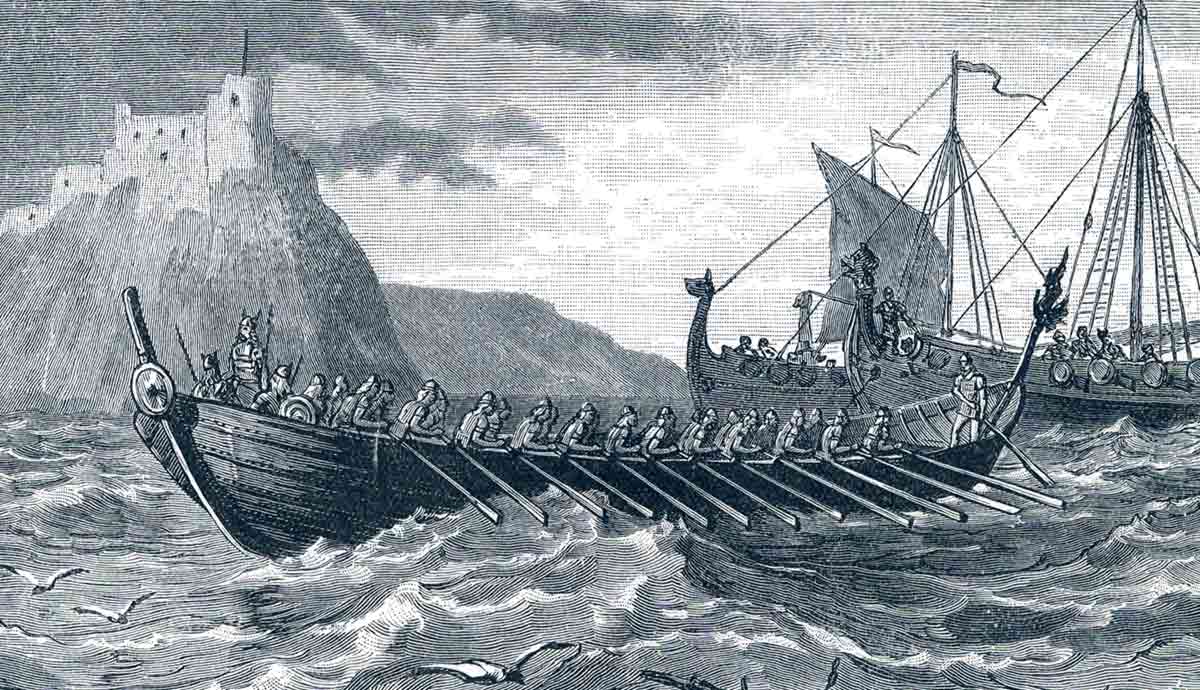
The ancient city of Caral-Supe in modern-day Peru is the oldest known civilization in the Americas. Its discovery has dramatically reshaped the understanding of early societies, with highly refined engineering skills and environmental adaptability that enabled the city to thrive in the challenging, arid environment of coastal Peru. Through remarkable archaeological finds such as pyramids, musical instruments, and early writing systems, Caral-Supe offers unique insights into the cultural and technological advancements of a 5,000-year-old civilization that was contemporaneous with the ancient Egyptians.
The Americas’ First City

On the north-central coast of Peru, the Caral-Supe civilization—also referred to simply as Caral—flourished as a complex pre-Columbian society between the fourth and second millennia BCE. Evidence of large-scale settlements and constructions can be found from 3100 BCE, but the formation of the first city is even older.
The discovery of traces of human activity at the site dating from around 3500 BCE pushes back the beginning of complex societies in the Americas by more than 2,000 years. The civilization of Caral-Supe predates the Mesoamerican Olmecs and the 900 BCE Chavín culture—once considered the first civilization in South America.
Caral is one of the “cradles of civilization,” six sites where civilization first originated through completely unrelated and independent processes. The site is of central importance to archaeology, as the findings and evidence it hosts can hint at the origins of other Andean civilizations and the processes involved in early urban organization worldwide.
Early Archaeological Work at Caral

Despite the importance of Caral-Supe to South American archaeology, the site received little attention from scholars following its discovery in 1948. This was largely due to the scant evidence of visual art and the complete lack of ceramic remains—which archaeologists consider a marker of advanced human activity. Additionally, the belief that local environmental conditions would have made the formation of complex societies impossible made scholars skeptical of whether the area would provide interesting findings.
However, both of these “failings” showcase interesting details about Caral-Supe. Its development without ceramics challenges conventional archaeological models, suggesting that other forms of cultural expression can be achieved without pottery. Also, the presence of such a thriving and complex civilization in a harsh environment reveals remarkable agricultural and water management ingenuity that deeply shaped Caral’s society.

Serious archaeological work at Caral-Supe began in the 1990s, led by Peruvian archaeologists who provided the first extensive documentation of the site. Further research in the early 21st century recognized Caral-Supe as the oldest-known civilization in the Americas. This groundbreaking discovery was partially thanks to the radiocarbon work carried out on 95 samples from the site, the earliest dating from 3,200 BCE, associated with large-scale human settlement and architectural construction.
Thriving in the Desert: Irrigation and Agricultural Systems in Caral-Supe

The agricultural systems at Caral-Supe played a fundamental role in the development of the civilization. As the region is marked by a challenging arid landscape and intermittent and seasonal rivers, proper strategies for water management were required to maximize the limited resources available.
The construction of canals and irrigation ditches helped divert the course of the Supe River—the most important body of water in the region—to the agricultural fields, enabling the cultivation of crops even during the dry season. Evidence of these irrigation channels has been found in the valley and suggests that these systems were carefully designed and maintained to ensure consistent water distribution.
The Caral civilization relied on a mixed farming system that combined the cultivation of both native and domesticated crops that were suited to the dry environment. A key feature for successful agriculture was the use of organic waste and plant residue as fertilizers to enrich the soils, with remnants of plant material and waste being found in archaeological excavations. These recycling techniques were essential for maintaining crops in this challenging environment and showcase an early form of what are now considered sustainable agricultural practices.
Architectural Complexity: The Great Pyramids of Caral-Supe

The pyramids in Caral highlight the complexity and organization of its society, as the construction of such monumental structures required a highly organized labor force and reflects the existence of hierarchy and specialized roles. The site contains six pyramids in total. The largest—the Pyramid Mayor—has a base of 150 x 160 meters (492 x 525 feet) and rises about 18 meters (59 feet) above the ground.
Evidence suggests that the structures were central to the city’s religious, political, and social life, used for ceremonies and possibly for astronomical observations. This is supported by the presence of artifacts such as musical instruments, textiles, and ceremonial objects found within the pyramids, suggesting that they played both a spiritual and social role in Caral’s civilization.

The Caral pyramids showcase a sophisticated knowledge of architecture and urban planning. Some of their key features include plazas and terraces at the top that were likely used for religious ceremonies, as well as the use of earthquake-resistant engineering. This was achieved using the shicra technique, in which reed bags were filled with rocks to create flexible foundations for the pyramids.
Quipu: A Writing and Accounting System

The quipu consists of a system of strings of different colors, spaced at consistent intervals. The color and position of each string would correspond to a number, and the way they were knotted and then tied to each other represented different mathematical calculations.
Although the quipu was the main instrument for administration and record-keeping of the later Inca Empire, evidence shows that it might have already been used by the Caral-Supe civilization over two thousand years earlier. Archaeologists identified remnants of knotted strings similar to the Inca’s quipus, as well an abundant presence of textiles among the archaeological remains of the city. The system could have been used to keep track of agricultural production, record demographic information, or as a calendar to track agricultural and seasonal cycles.
The discovery of quipu in Caral-Supe pushes back the timeline of its usage by millennia and shows the deep roots of this system among the Andean cultures. While the exact degree of sophistication of Caral’s quipu cannot be fully understood by known archaeological evidence, its existence among the city’s remains would make the quipu the earliest known form of communication in the Americas.
Flutes: Music in Caral-Supe’s Spiritual Life

The flutes found at the Caral-Supe archaeological site are among the most fascinating and culturally significant artifacts of this ancient civilization. Dating to around 2600 BCE, these instruments are evidence of the importance and role of musical and ceremonial practices in Caral’s society.
The flutes were primarily made from animal bone, often from native birds such as pelicans and condors, which were chosen for both symbolic and practical reasons. Their long bones could be easily transformed into musical instruments, and these large and majestic birds often had spiritual significance in other Andean cultures. The flutes were expertly crafted, demonstrating an understanding of sound and acoustics.
Several flute artifacts were recovered from temples and ceremonial areas of the city, pointing to their use for religious rituals and social gatherings. The most significant finds come from the Pyramid Mayor, where flutes were found carefully placed—likely as offerings during sacred ceremonies.
Religious Belief: Discovering the Staff God

A single piece of visual art was recovered from Caral-Supe during an excavation in 2003. Displaying a cartoonish aspect with a leering smile, fangs, and a hood, this finding is one of the only clues through which archaeologists can attempt to understand the deities worshiped in the city.
But theories regarding the true nature of the figure are still being debated. Some researchers believe that the image is an early representation of the so-called “Staff God”—a major deity of later Andean cultures. If so, then the evidence suggests earlier worship and a long-held belief in this deity by the local societies.
However, other scholars are not so convinced by this interpretation. Some have hypothesized that the figure could rather represent a priest or religious leader. The ambiguous nature of the image keeps the debate open, with new theories being supported by different scholars.
Far and Wide: Exotic Artifacts at Caral-Supe

The recovery of objects and artifacts coming from distant regions indicates that Caral-Supe had a far-reaching influence despite its isolated location. Marine shells from the Pacific coast, seeds of tropical fruits, and other non-native materials could indicate long-distance trade and link Caral to both coastal and inland communities.
Particularly intriguing is the presence of obsidian tools, an exotic material that likely came from the volcanic regions of the Andes. The presence of these artifacts implies that Caral-Supe had established connections with highland communities and exchanged valuable resources such as minerals, textiles, and agricultural imports.
These trade networks not only facilitated the trade of resources but also enabled cultural and technological diffusion. The early exchange of goods and knowledge between Caral and nearby societies demonstrates the integration of pre-Columbian trade systems, and this integration may have been crucial for the development of Caral’s advanced architecture and complex irrigation systems.
City Without War: Peaceful Caral-Supe

Among all these impressive archaeological finds, one notable absence stands out to researchers: weapons. There is no evidence of warfare, no weaponry or fortifications surrounding the city, and no traces of mutilation or violence inside the tombs discovered. Caral seems to have been a peaceful city.
This makes Caral stand out among other ancient societies—not only in the Andes but worldwide, as many scholars believe that warfare is inevitable. The Caral-Supe example reshapes the understanding of how early civilizations could evolve: cooperation and economic exchange were preferred over military dominance.
Legacy and Modern-Day Impact

The legacy of Caral-Supe extends beyond its age and influences current knowledge of early civilizations both in South America and worldwide. As one of the oldest urban centers, Caral challenges long-held assumptions about the emergence of the first civilizations, providing fascinating insights into pre-Columbian societies.
The unique social and cultural structures found in Caral-Supe have influenced modern archaeological thought; the lack of traditional findings such as ceramics and visual art and the absence of traces of warfare demonstrate a new way in which ancient civilizations could thrive.
The site was recognized as a UNESCO World Heritage Site in 2008. As a symbol of Peruvian culture and history, Caral represents the deep historical roots of Andean civilization and resonates both with archaeologists and the broader public.









